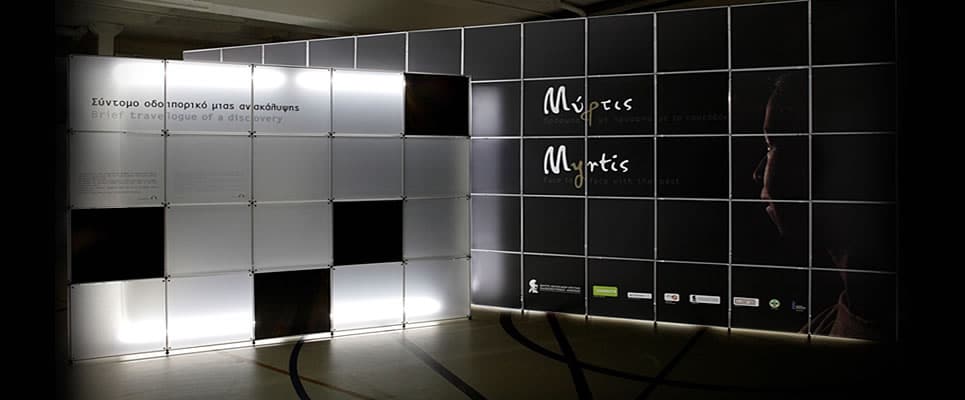
MYRTIS, AN ATHENIAN GIRL WHO LIVED 2500 YEARS AGO
Myrtis died of typhoid fever during the plague which hit Athens in the middle of the 5th Century BC. Typhoid fever today – 2.500 years after – affects over 21 million people around the world, causing more than 200,000 deaths annually, predominantly among pre-school and school-age children in developing countries.
 The United Nations Regional Information Centre (UNRIC) “asked” Myrtis to become a friend of the UN Millennium Development Goals and join, in her own unique way, the United Nations global campaign “We can End Poverty”.
The United Nations Regional Information Centre (UNRIC) “asked” Myrtis to become a friend of the UN Millennium Development Goals and join, in her own unique way, the United Nations global campaign “We can End Poverty”.
This is how Myrtis became a friend and supporter of the United Nations. She “assumed” her duties without delay by sending a message to world leaders who attended the UN Millennium Development Goals Summit in September 2010.
So, Myrtis is not any longer only “face to face with the past” but also “face to face with the present and future”.
Myrtis’ message to the World:
My name is Myrtis. Actually this is not my true name. I was named “Myrtis” by the archeologists that discovered my bones in 1994-1995, in a mass grave with another 150 skeletons in the Athens area of Kerameikos.
I may look like a girl of the 21st century but I can assure you that I’m an eleven year old Athenian girl who lived and died in Athens during the 5th century BC.
So, how can a young ancient Athenian become a Millennium Friend of the United Nations?
The scientists are certain that I was one of the victims of the plague that struck Athens during the 5th century BC. They also know that the cause of my death was the typhoid fever that also killed the ancient Athenian statesman Pericles and roughly one third of all people living in the city at that time. They also say that it was this plague that contributed to Athens´ defeat by Sparta during the Peloponnesian Wars.
My skull was in an unusually good condition and this inspired Athens University Orthodontics professor Manolis J. Papagrigorakis to begin – with the help of specialist scientists – to effect a facial reconstruction. And, here I am. You can see the result of their efforts in my photo. I look almost exactly the same as the day I died.
Prof. Manolis J. Papagrigorakis thought that my ‘resurrection’ should not only be an opportunity for the world to see the face of a girl who played at the Acropolis while the Athenians were building the Parthenon, but he also wanted my “return” to send a strong message to the world and its leaders.
My death was inevitable. In the 5th century BC we had neither the knowledge nor the means to fight deadly illnesses. However, you, the people of the 21st century, have no excuse. You possess all the necessary means and resources to save the lives of millions of people. To save the lives of millions of children like me who are dying of preventable and curable diseases.
2,500 years after my death, I hope that my message will engage and inspire more people to work and make the Millennium Development Goals a reality. Listen to me. I know what I’m saying. Never forget that I’m much older and therefore much wiser than you.
Her message to world leaders was translated into 23 languages – available on the website
Myrtis Exhibits:

Myrtis is the central person of the exhibition «Myrtis: Face to face with the past» which has begun a planned tour of Greek and further afar.